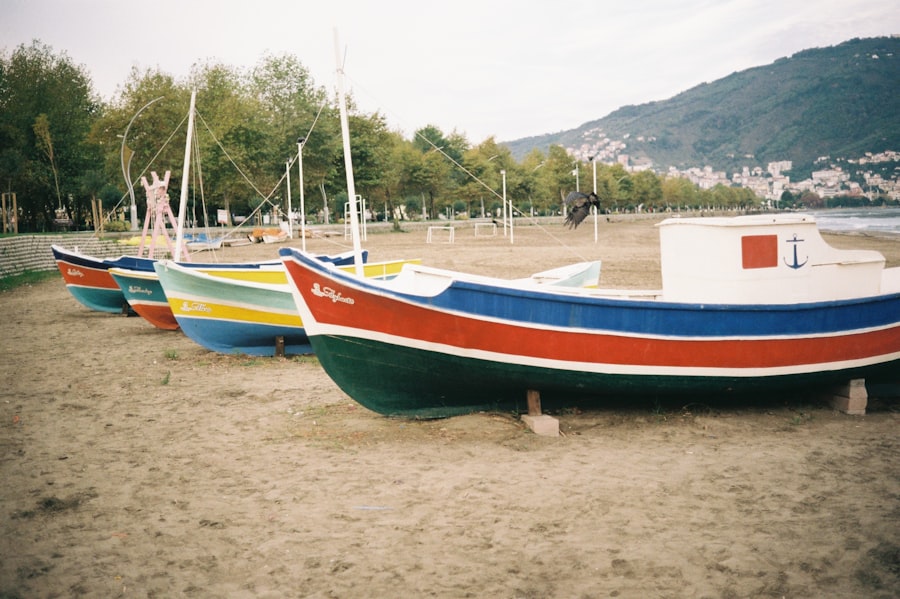The search for second-hand boats can be an exciting yet daunting task, especially for first-time buyers. One of the most popular avenues for finding used boats is through online marketplaces. Websites such as Boat Trader, Craigslist, and eBay Motors offer extensive listings that allow potential buyers to filter by type, price, and location.
These platforms often include detailed descriptions, photographs, and contact information for sellers, making it easier to compare different options. Additionally, many local boat dealerships have a section dedicated to pre-owned vessels, providing a more curated selection and often offering warranties or guarantees that can provide peace of mind. Another effective way to find second-hand boats is through boat shows and expos.
These events not only showcase new models but also feature a variety of used boats from private sellers and dealers. Attending a boat show allows buyers to see the vessels in person, ask questions directly to the sellers, and sometimes even negotiate prices on the spot. Furthermore, networking within local boating communities can yield valuable leads.
Joining clubs or online forums dedicated to boating can connect you with individuals looking to sell their boats, often at more competitive prices than those found in commercial listings.
Key Takeaways
- Explore various sources like online marketplaces, boat dealerships, and marinas to find second hand boats for sale.
- Thoroughly inspect the boat’s condition, including the hull, engine, and electronics, before purchasing.
- Research and negotiate to secure the best possible price based on the boat’s condition and market value.
- Review the boat’s maintenance history to understand past repairs and upkeep for informed decision-making.
- Consider financing options and ensure proper legal ownership transfer and insurance coverage for a smooth purchase.
Tips for Inspecting Second Hand Boats
When inspecting a second-hand boat, a thorough examination is crucial to ensure that you are making a sound investment. Start with a visual inspection of the hull for any signs of damage, such as cracks, blisters, or discoloration. Pay close attention to the transom and the keel, as these areas are particularly susceptible to wear and tear.
If possible, take the boat out of the water to inspect the bottom for barnacles or other growth that could indicate neglect. A clean hull is often a sign of a well-maintained vessel. Beyond the exterior, it’s essential to assess the boat’s mechanical systems.
Check the engine for signs of rust or corrosion and inquire about its maintenance history. A well-documented service record can provide insight into how well the boat has been cared for over the years. Additionally, test all onboard systems, including electrical components, plumbing, and navigation equipment.
If you’re not confident in your ability to evaluate these systems, consider hiring a marine surveyor who can provide a professional assessment and identify any potential issues that may not be immediately apparent.
Negotiating the Best Price for a Second Hand Boat

Negotiating the price of a second-hand boat requires a blend of research, strategy, and interpersonal skills. Before entering negotiations, it’s vital to conduct thorough market research to understand the average prices for similar boats in your area. Websites like NADA Guides or Kelley Blue Book can provide valuable insights into fair market values based on the boat’s make, model, age, and condition.
Armed with this information, you can approach negotiations with confidence and a clear understanding of what constitutes a reasonable offer. During negotiations, it’s important to remain calm and composed. Start with an offer that is lower than your maximum budget but still reasonable based on your research.
This gives you room to negotiate upwards while still aiming for a price that fits your financial plan. Be prepared to justify your offer by pointing out any flaws or necessary repairs you’ve identified during your inspection. Additionally, be willing to walk away if the seller is unwilling to meet your price; sometimes this can prompt them to reconsider their stance and come back with a better offer.
Understanding the Maintenance History of Second Hand Boats
| Metric | Description | Importance | Typical Data Source | Frequency |
|---|---|---|---|---|
| Engine Service Records | Documentation of engine maintenance, repairs, and oil changes | High – Ensures engine reliability and longevity | Service logs, mechanic invoices | Every 50-100 hours of operation or annually |
| Hull Inspection Reports | Records of hull condition, damage repairs, and anti-fouling treatments | High – Critical for safety and performance | Surveyor reports, maintenance logs | Annually or after major incidents |
| Electrical System Checks | Maintenance of wiring, batteries, and electronic equipment | Medium – Prevents failures and safety hazards | Inspection reports, maintenance records | Every 6-12 months |
| Propeller and Drive System Maintenance | Records of propeller condition, shaft alignment, and gearbox servicing | Medium – Affects propulsion efficiency | Service invoices, inspection logs | Annually or as needed |
| Safety Equipment Checks | Verification of life jackets, fire extinguishers, and signaling devices | High – Essential for compliance and safety | Inspection checklists, certification records | Before each season or voyage |
| Fuel System Maintenance | Cleaning and inspection of fuel tanks, lines, and filters | Medium – Prevents engine issues and contamination | Service records, inspection reports | Annually or every 100 hours |
| Bilge Pump Functionality | Testing and maintenance of bilge pumps and alarms | High – Prevents flooding and water damage | Maintenance logs, test reports | Monthly or before voyages |
A comprehensive understanding of a second-hand boat’s maintenance history is essential for assessing its overall condition and longevity. Requesting documentation of all maintenance work performed on the vessel can provide insight into how well it has been cared for over the years. Look for records of regular services such as oil changes, engine tune-ups, and inspections of critical systems like the electrical and plumbing setups.
A well-maintained boat is likely to have fewer issues down the line and can save you significant repair costs. In addition to routine maintenance records, inquire about any major repairs or modifications that have been made to the boat. For instance, if the engine has been replaced or upgraded, this could significantly impact the vessel’s performance and reliability.
Understanding whether the boat has been involved in any accidents or sustained significant damage is also crucial; such incidents can lead to long-term structural issues that may not be immediately visible. A transparent maintenance history not only helps you gauge the current state of the boat but also provides reassurance regarding its future performance.
Financing Options for Second Hand Boats
Financing a second-hand boat can be approached in several ways, depending on your financial situation and preferences. Traditional bank loans are one option; many banks offer specialized marine financing that caters specifically to boat purchases. These loans typically require a down payment and may have terms ranging from five to twenty years.
It’s advisable to shop around for competitive interest rates and terms that suit your budget. Another financing avenue is through credit unions or specialized marine lenders who may offer more favorable terms than traditional banks. These institutions often have a better understanding of the boating market and may provide loans with lower interest rates or more flexible repayment options.
Additionally, some boat dealers offer in-house financing options that can simplify the purchasing process by allowing you to handle everything in one place. Regardless of which financing option you choose, it’s essential to read all terms carefully and ensure that you fully understand your obligations before signing any agreements.
Ensuring the Legal Transfer of Ownership for Second Hand Boats

The legal transfer of ownership when purchasing a second-hand boat involves several critical steps that must be followed to ensure compliance with local laws and regulations. First and foremost, verify that the seller has clear title to the boat; this means they should possess all necessary documentation proving ownership without any liens or encumbrances attached. Request to see the title certificate and check for any outstanding loans or claims against the vessel.
Once you’ve confirmed ownership, it’s essential to complete a bill of sale that outlines all pertinent details of the transaction, including the purchase price, date of sale, and both parties’ information. This document serves as proof of ownership transfer and may be required for registration purposes with local authorities. Depending on your jurisdiction, you may also need to register the boat with state or federal agencies; this process often involves submitting forms along with proof of ownership documentation and payment of any applicable fees.
Upgrades and Add-ons for Second Hand Boats
When considering a second-hand boat purchase, it’s important to think about potential upgrades and add-ons that could enhance your boating experience. Many used boats come equipped with basic features; however, customizing your vessel can significantly improve functionality and comfort on the water. Common upgrades include installing modern navigation systems such as GPS units or fish finders that can enhance your fishing trips or leisure outings.
Additionally, consider upgrading safety equipment such as life jackets, fire extinguishers, and first aid kits to ensure compliance with safety regulations while providing peace of mind during your adventures. Other popular add-ons include improved seating arrangements or sunshades that enhance comfort during long trips. When evaluating potential upgrades, it’s wise to factor these costs into your overall budget for purchasing the boat so that you can make informed decisions about what enhancements will best suit your needs.
Finding the Right Insurance for Second Hand Boats
Securing appropriate insurance coverage for your second-hand boat is an essential step in protecting your investment and ensuring peace of mind while on the water. Boat insurance policies vary widely in terms of coverage options, so it’s crucial to assess your specific needs before selecting a policy. Factors such as how often you plan to use the boat, where you will be operating it, and whether you will be storing it in water or on land can all influence your insurance requirements.
When shopping for insurance, consider obtaining quotes from multiple providers to compare coverage options and premiums effectively. Look for policies that cover liability in case of accidents involving other vessels or property damage as well as comprehensive coverage that protects against theft or damage due to weather-related incidents. Additionally, inquire about any discounts available for safety features installed on your boat or if you have completed boating safety courses; these can help reduce your premiums while ensuring you have adequate protection while enjoying your time on the water.


